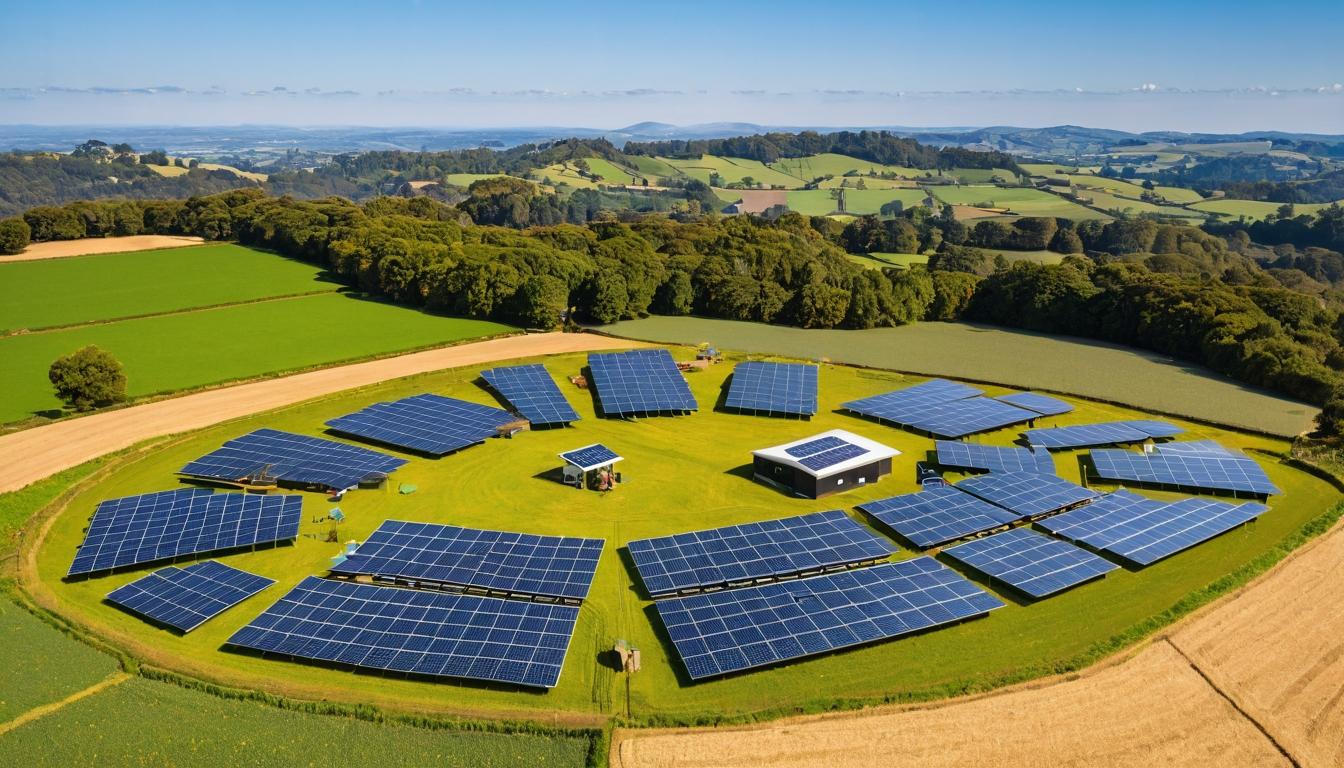While most homeowners focus on rooftop installations, a quiet revolution is happening at ground level. Community solar projects are exploding across the country, allowing renters, apartment dwellers, and those with shaded roofs to access clean energy savings. These shared solar farms are rewriting the rules of who can participate in the renewable energy transition.
What makes this movement particularly compelling is how it's solving the equity problem that has plagued solar adoption for decades. Low-income households, which often spend a disproportionate percentage of their income on energy bills, are finally getting access to solar savings without upfront costs. The math is simple: subscribers typically save 10-15% on their electricity bills while supporting local clean energy generation.
The technology behind these projects has evolved dramatically. Modern community solar farms use bifacial panels that capture sunlight from both sides, increasing energy production by up to 20%. Combined with advanced tracking systems that follow the sun throughout the day, these installations are achieving efficiencies that were unimaginable just five years ago.
But the real story isn't just about technology—it's about policy. States like New York, Massachusetts, and Illinois have created innovative programs that guarantee project viability while protecting consumers. The result? A booming market that's creating local jobs and keeping energy dollars within communities rather than sending them to distant utility corporations.
Meanwhile, the commercial and industrial sector is undergoing its own transformation. Warehouse roofs, parking lot canopies, and even agricultural land are being converted into power generators. The concept of 'agrivoltaics'—combining solar panels with farming—is showing remarkable promise. Early research indicates that certain crops actually thrive under partial shade from elevated panels, creating a win-win scenario for farmers struggling with climate volatility.
What's often overlooked in the solar conversation is the rapid evolution of energy storage. The combination of solar panels with home battery systems is creating energy-independent households that can weather power outages and reduce strain on the grid during peak demand. Companies are developing increasingly sophisticated energy management systems that optimize when to draw from batteries, when to pull from the grid, and when to send excess power back.
The financial landscape has shifted dramatically too. While purchase and loan options remain popular, new subscription models are emerging that require zero money down. These 'solar-as-a-service' arrangements let homeowners access clean energy through monthly payments that are often lower than their current utility bills. The risk has been transferred from consumers to experienced solar companies that handle maintenance, monitoring, and performance guarantees.
Manufacturing innovations are driving down costs while improving performance. Perovskite solar cells, once confined to laboratory settings, are nearing commercial viability with conversion efficiencies approaching 30%. These next-generation panels could be manufactured using roll-to-roll printing processes, dramatically reducing production costs and environmental impact.
The international supply chain story is equally fascinating. While China dominates panel manufacturing, countries like Vietnam, Malaysia, and India are emerging as significant players. The U.S. domestic manufacturing scene is also reviving, supported by federal incentives and growing demand for American-made products. This diversification is creating a more resilient supply chain less vulnerable to geopolitical tensions.
Perhaps the most underreported aspect of the solar revolution is how it's transforming rural economies. Farmers who once relied solely on crops are now harvesting sunlight alongside their traditional harvests. The additional income from leasing land for solar projects is providing financial stability in an industry known for its volatility.
The interconnection process—getting solar systems connected to the grid—remains a challenge, but utilities are beginning to embrace distributed generation as a grid resource rather than a threat. Advanced inverters can now provide grid services like voltage support and frequency regulation, turning millions of solar systems into a virtual power plant.
Looking ahead, building-integrated photovoltaics (BIPV) represent the next frontier. Solar windows, roofing tiles, and facade materials are moving from concept to reality. These technologies will eventually make every building surface a potential energy generator, fundamentally changing how we think about architecture and urban planning.
The human element of this transition deserves more attention. Solar installers are becoming the new skilled tradespeople, with training programs emerging at community colleges and technical schools across the country. These are well-paying jobs that can't be outsourced, creating economic opportunity in communities that need it most.
As costs continue to fall and technology improves, we're approaching a tipping point where solar becomes the default choice for new construction and energy retrofits. The question is no longer whether solar makes sense, but how quickly we can scale deployment to meet climate goals while ensuring the benefits reach every community.
The solar revolution you're not hearing about: beyond rooftop panels

